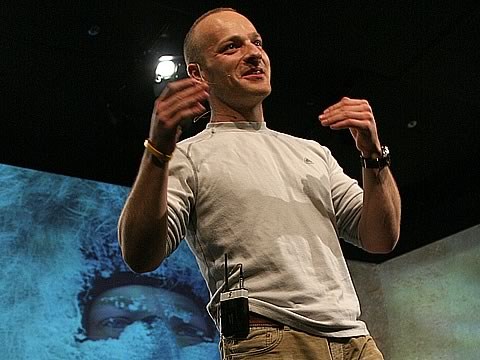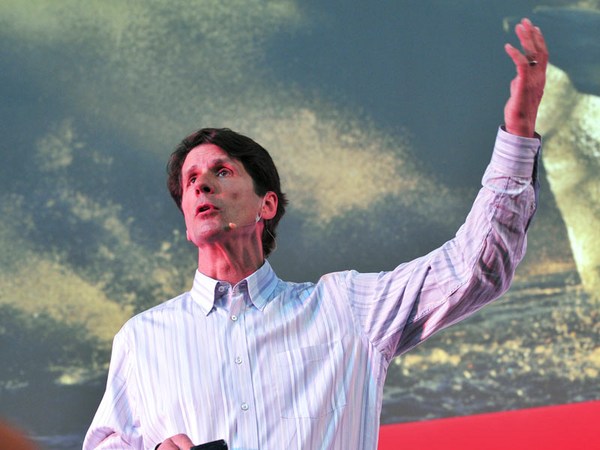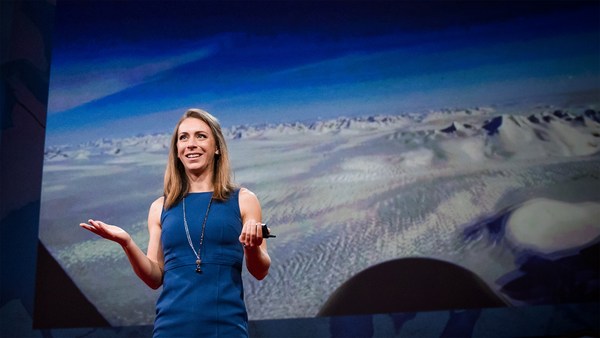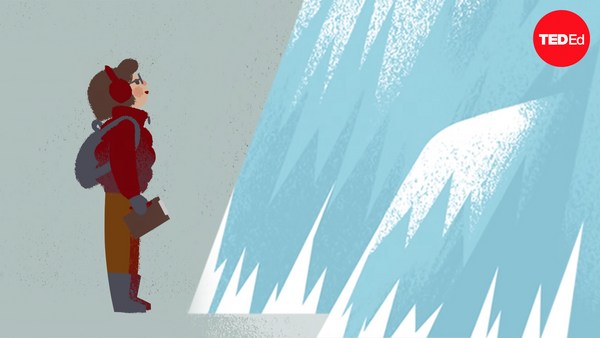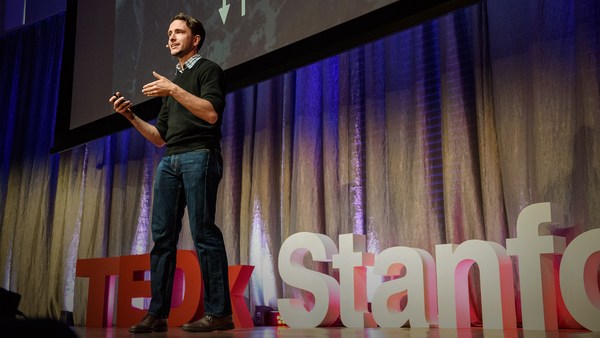Come with me to the bottom of the world, Antarctica, the highest, driest, windiest, and yes, coldest region on Earth -- more arid than the Sahara and, in parts, colder than Mars. The ice of Antarctica glows with a light so dazzling, it blinds the unprotected eye. Early explorers rubbed cocaine in their eyes to kill the pain of it. The weight of the ice is such that the entire continent sags below sea level, beneath its weight. Yet, the ice of Antarctica is a calendar of climate change. It records the annual rise and fall of greenhouse gases and temperatures going back before the onset of the last ice ages. Nowhere on Earth offers us such a perfect record. And here, scientists are drilling into the past of our planet to find clues to the future of climate change.
This past January, I traveled to a place called WAIS Divide, about 600 miles from the South Pole. It is the best place on the planet, many say, to study the history of climate change. There, about 45 scientists from the University of Wisconsin, the Desert Research Institute in Nevada and others have been working to answer a central question about global warming. What is the exact relationship between levels of greenhouse gases and planetary temperatures? It's urgent work. We know that temperatures are rising. This past May was the warmest worldwide on record. And we know that levels of greenhouse gases are rising too. What we don't know is the exact, precise, immediate impact of these changes on natural climate patterns -- winds, ocean currents, precipitation rates, cloud formation, things that bear on the health and well-being of billions of people.
Their entire camp, every item of gear, was ferried 885 miles from McMurdo Station, the main U.S. supply base on the coast of Antarctica. WAIS Divide itself though, is a circle of tents in the snow. In blizzard winds, the crew sling ropes between the tents so that people can feel their way safely to the nearest ice house and to the nearest outhouse. It snows so heavily there, the installation was almost immediately buried. Indeed, the researchers picked this site because ice and snow accumulates here 10 times faster than anywhere else in Antarctica. They have to dig themselves out every day. It makes for an exotic and chilly commute.
(Laughter)
But under the surface is a hive of industrial activity centered around an eight-million-dollar drill assembly. Periodically, this drill, like a biopsy needle, plunges thousands of feet deep into the ice to extract a marrow of gases and isotopes for analysis. Ten times a day, they extract the 10-foot long cylinder of compressed ice crystals that contain the unsullied air and trace chemicals laid down by snow, season after season for thousands of years. It's really a time machine. At the peak of activity earlier this year, the researchers lowered the drill an extra hundred feet deeper into the ice every day and another 365 years deeper into the past. Periodically, they remove a cylinder of ice, like gamekeepers popping a spent shotgun shell from the barrel of a drill. They inspect it, they check it for cracks, for drill damage, for spalls, for chips.
More importantly, they prepare it for inspection and analysis by 27 independent laboratories in the United States and Europe, who will examine it for 40 different trace chemicals related to climate, some in parts per quadrillion. Yes, I said that with a Q, quadrillion. They cut the cylinders up into three-foot sections for easier handling and shipment back to these labs, some 8,000 miles from the drill site. Each cylinder is a parfait of time.
This ice formed as snow 15,800 years ago, when our ancestors were daubing themselves with paint and considering the radical new technology of the alphabet. Bathed in polarized light and cut in cross-section, this ancient ice reveals itself as a mosaic of colors, each one showing how conditions at depth in the ice have affected this material at depths where pressures can reach a ton per square inch. Every year, it begins with a snowflake, and by digging into fresh snow, we can see how this process is ongoing today. This wall of undisturbed snow, back-lit by sunlight, shows the striations of winter and summer snow, layer upon layer. Each storm scours the atmosphere, washing out dust, soot, trace chemicals, and depositing them on the snow pack year after year, millennia after millennia, creating a kind of periodic table of elements that at this point is more than 11,000 feet thick. From this, we can detect an extraordinary number of things. We can see the calcium from the world's deserts, soot from distant wildfires, methane as an indicator of the strength of a Pacific monsoon, all wafted on winds from warmer latitudes to this remote and very cold place.
Most importantly, these cylinders and this snow trap air. Each cylinder is about 10 percent ancient air, a pristine time capsule of greenhouse gases -- carbon dioxide, methane, nitrous oxide -- all unchanged from the day that snow formed and first fell. And this is the object of their scrutiny. But don't we already know what we need to know about greenhouse gases? Why do we need to study this anymore? Don't we already know how they affect temperatures? Don't we already know the consequences of a changing climate on our settled civilization? The truth is, we only know the outlines, and what we don't completely understand, we can't properly fix. Indeed, we run the risk of making things worse.
Consider, the single most successful international environmental effort of the 20th century, the Montreal Protocol, in which the nations of Earth banded together to protect the planet from the harmful effects of ozone-destroying chemicals used at that time in air conditioners, refrigerators and other cooling devices. We banned those chemicals, and we replaced them, unknowingly, with other substances that, molecule per molecule, are a hundred times more potent as heat-trapping, greenhouse gases than carbon dioxide.
This process requires extraordinary precautions. The scientists must insure that the ice is not contaminated. Moreover, in this 8,000-mile journey, they have to insure this ice doesn't melt. Imagine juggling a snowball across the tropics. They have to, in fact, make sure this ice never gets warmer than about 20 degrees below zero, otherwise, the key gases inside it will dissipate. So, in the coldest place on Earth, they work inside a refrigerator. As they handle the ice, in fact, they keep an extra pair of gloves warming in an oven, so that, when their work gloves freeze and their fingers stiffen, they can don a fresh pair. They work against the clock and against the thermometer.
So far, they've packed up about 4,500 feet of ice cores for shipment back to the United States. This past season, they manhandled them across the ice to waiting aircraft. The 109th Air National Guard flew the most recent shipment of ice back to the coast of Antarctica, where it was boarded onto a freighter, shipped across the tropics to California, unloaded, put on a truck, driven across the desert to the National Ice Core Laboratory in Denver, Colorado, where, as we speak, scientists are now slicing this material up for samples, for analysis, to be distributed to the laboratories around the country and in Europe.
Antarctica was this planet's last empty quarter -- the blind spot in our expanding vision of the world. Early explorers sailed off the edge of the map, and they found a place where the normal rules of time and temperature seem suspended. Here, the ice seems a living presence. The wind that rubs against it gives it voice. It is a voice of experience. It is a voice we should heed.
Thank you.
(Applause)
